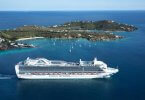CLAUDETTE COVEY APRIL 20, 2021

News of the U.S. State Department’s decision to expand the Do Not Travel list to 80 percent of countries angered and perplexed travel advisors – but didn’t exactly surprise them.
“I am numb to the constant changes to COVID travel restrictions. Once again, we are supposed to meekly accept a new decree from the government with no substantial information shared as to why they made this decision,” said Claire Schoeder of Elevations Travel. “The ‘because I said so’ excuse is better used with toddlers than with adults making travel decisions for themselves and their families.”
Other advisors were confused by why certain countries were put on the list.
“Barbados and Antigua are actively vaccinating their citizens at a fast rate and the other islands listed have had strict measures in place for tourists arriving from other destinations and they put these measures in place FAR before the Centers for Disease Control (CDC) required proof of a negative covid test back on Jan. 12,” said Jennifer Doncsecz of VIP Vacations. “If the State Department is worried about the spread of COVID, before they issue a ‘do not travel list,’ they really should specifically advise Americans to travel to these destinations when fully vaccinated. Not only are Americans on the losing end but sadly these foreign destinations that rely heavily on tourism are also the losers.
While dismayed by the expanded list of countries, James Berglie of Be All Inclusive was not shocked by it, either.
“It’s not a surprising move from this administration, as their message continues to be completely contradictory,” he said. “One minute the CDC says vaccinated travelers are low risk to travel, and the next they come out with this, which seems to go against their last statement.”
“I think most Americans have grown immune to the constantly changing and contradictory recommendations by the government and the CDC,” Berglie said in response to a statement from the State Department that the changes reflect an adjustment to the agency’s “travel advisory system to rely more on CDC’s existing epidemiological assessments.”
He added, “Americans are willing to take personal responsibility, be cautious, and continue on with their lives and traveling internationally while the government and the media continue to perpetuate fear.”
On a similar note, Richard Turen of Churchill & Turen said “it appears that the State Department is turning to the CDC for newly established guidelines regarding country ratings (Level 4) that will strike at the heart of tourism in countries worldwide that desperately depend on it. The CDC has not been able to tell Congress how it has determined its current cruise No Sail orders.
“We can only hope that the current criteria the CDC will be using for these new rules shutting down more than 90 percent of international travel will be better formulated than the mess they have created within the cruise sector.”
ASTA, meanwhile, had a more tempered response to the State Department’s expanded Do Not Travel list.
“ASTA remains an advocate for the development of a risk-based, data-driven roadmap for restoring international travel. The government has historically used broad based risk indicators to inform their warnings. We believe that the State Department needs to be more precise when it comes to making decisions about travel warnings,” the Society said.
“Despite this imprecise and imperfect system, we point people to the State Department, and CDC, as they consider their own risk profile. It is always up to the traveler, with the help of their travel advisor, to make informed decisions about traveling based on their personal level of risk tolerance.
“We remain committed to the travel industry restart and recovery with federal, state and international governments in a way that puts the safety and health of U.S. travelers at its center.
“The ultimate decision about where and when to travel should always remain in hands of the traveler themselves.”







